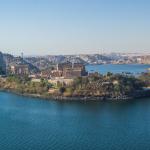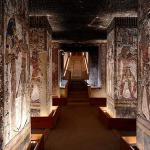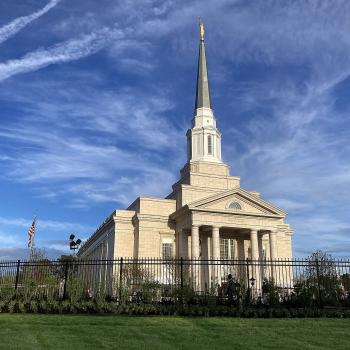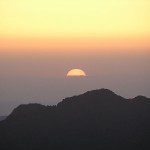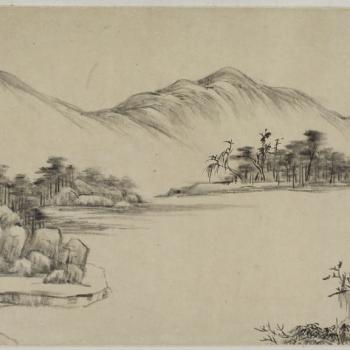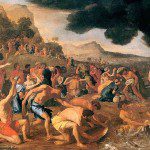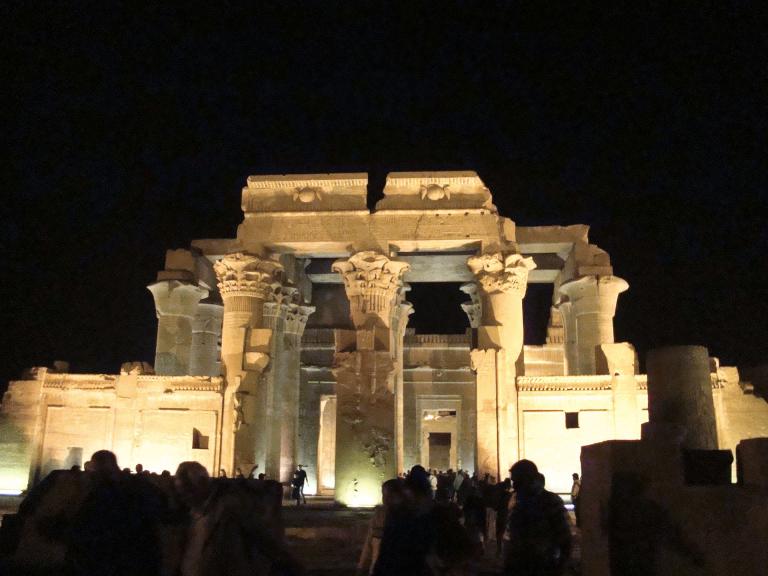
(Wikimedia Commons public domain)
Our visit to the Nubian village of Gharb Suhayl yesterday was completely different than any of our previous visits there, and I really liked it. We landed a few hundred yards south of our previous landing spot, and never actually went to the area that we had spent our time in on earlier occasions. This time, we went to the local school, where “Mr. Umar” tried to teach our people the Arabic alphabet and the Arabic and Nubian numerals — to great amusement on his part and on the part of our group, who were very good sports. If they didn’t do well, he had a cane that he was not afraid to use. (Not really, but it was funny.) When he wrote things out in Arabic, I made every effort to appear completely clueless as to what it meant. The alternative was to be up in front of the class myself. We also visited a large, brightly colored home, where our people had a wonderful view of the eastern bank of the Nile across from us at just the time that the sun was setting in the west. It could hardly have been better. And, of course, those who wanted to do so had the chance to be photographed holding and even kissing a baby crocodile (whose toothy grin had been bound shut).
Some people, I’m sure, are wondering whether we’ve encountered any of the effects of the (current) instability in the Middle East. We’re not done yet, obviously, but so far there’s been virtually nothing. Except that, wonderfully for us but sadly for Egypt, tourist numbers are done. Our boat was scheduled to be full, but some groups canceled and the boat is currently at sixty percent of capacity. That seems to be about typical of the country as a whole. Our Egyptian tour guide, Bahgat, tells me that he had two tours cancel on him in December. The Nile cruise boats as a group were booked solidly through April, but there are now many vacancies during that period.
Have we felt endangered? Not a bit. There has been no sign of anything worrisome. Only once — the other day, when we were walking on al-Mu‘izz Street near Khan al-Khalili — did politics intrude. A sixtyish looking man, noticing that we were Amrikaan, began to address me in quite respectable English, politely exhorting us in a conversational tone to change our government. I’m not at all opposed to changing our government (though I have deep concerns over the available options), and I told him so. We parted amicably.
We boarded our boat, the Mayflower, last night, and it set sail from Aswan at about five o’clock this morning. By 8:30, after a good breakfast, we were docked beside the fascinating dual temple of Kom Ombo (and the extraordinarily aggressive vendors who always throng the river bank). We walked over to the temple, which was sacred on one of its sides to Horus and on the other to the crocodile god Sobek and adjacent to which is a museum that is richly furnished with (what else?) mummified crocodiles.
Kom Ombo is located at a bend in the River Nile where, before the dams were erected, a crocodile-infested island existed. The island is no more, these days, and there are no crocodiles north of the Aswan High Dam.
This stop gave me an opportunity to talk to them very briefly about Figure 9 in Facsimile 1 of the Book of Abraham, also known as “the idolatrous god of Pharaoh.” It strikes me as genuinely remarkable that the unlettered rural yokel Joseph Smith got that one right; the identification doesn’t seem exactly obvious or intuitive. But Sobek is, indeed, the idolatrous god of pharaoh.
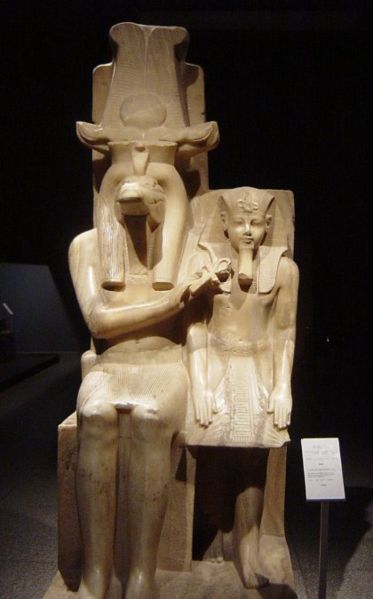
The boat then took us further down the Nile to the city of Edfu, where a large and well preserved temple from the Ptolemaic and Greco-Roman stands. Our group exited the boat and boarded horse-drawn carriages to reach the temple (and the, umm, enthusiastic vendors who form a nearly impregnable barrier in front of it).
I find two particular aspects of Edfu especially fascinating. The first is the three large statues of Horus that it features, one of which is particularly large and well-preserved.
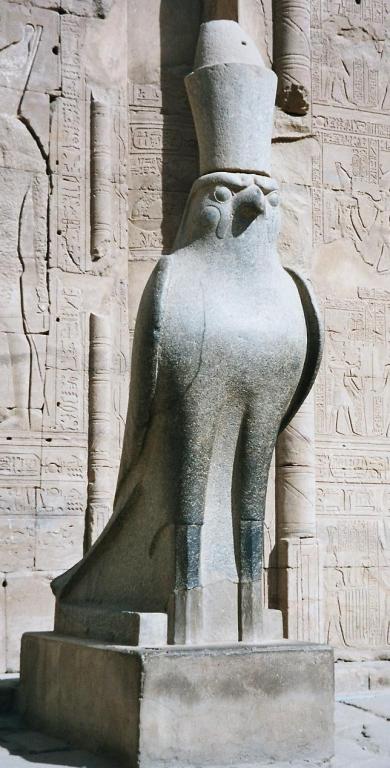
(Wikimedia Commons public domain)
The second is the holy of holies of the temple, which is largely intact and which, therefore, provides a very clear example of that aspect of ancient Egyptian temples more generally. In it, visitors can see the boat that was kept in this innermost part of the sanctuary, with its small shrine for the image of the god, with its fore and aft images of the goddess Hathor, and with the poles that allowed it to be carried in processions. This seems to me obviously related to the holy of holies of the Israelite “tabernacle” or “tent of meeting” and of the Temple of Solomon that succeeded it. Located within the holy of holies of the Israelite temple was the Ark of the Covenant, until it was lost, which was designed to be carried in much the same way that the Egyptian “boat” was. The striking difference, of course, was that the Egyptian “boat” carried an image of the god, while no image of Yahweh was permitted to the Israelites.
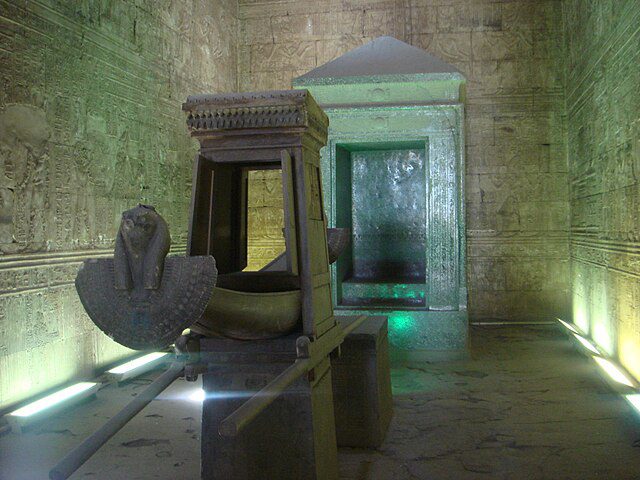
We then cruised further northward, which is to say downstream, from Edfu toward Luxor. Most of us spent some time up on top of the boat, where a beautiful sunset bathed the Nile and the fields on its banks in subtly changing colors. But it was, alas, just a tad chilly and breezy as the sun went down and the boat sped along, so we all eventually abandoned the top deck for warmer quarters within. However, sailing on the Nile remains one of my favorite ways of seeing this historic land.
Posted from the Nile River, somewhat north of Edfu


